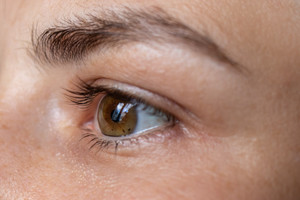Fuchs Dystrophy: Symptoms, Diagnosis And Treatment
Fuchs Dystrophy is a type of disease which affects the cornea. This condition occurs when the endothelium which is present in the corneal layer dies off and the cornea gets swollen and puffy. Endothelium is responsible for keeping the corneal layer clean by pumping fluid. This condition also causes the vision to appear hazy and cloudy.
It has two stages. During the early stage some problems are noticeable. The vision gets hazy in the morning but becomes clear as time goes by. The eyes usually stay moist when we sleep, but when a person is awake, the eyes get dried. During the later stage, the vision gets blurry all day and the fluid does not dry up even after a person is awake. Tiny blisters are also formed in the cornea, eventually breaking up and causing eye pain.
People who are between the age group of 30-40 have this condition but they do not know it. Women are more susceptible to this condition and if you have a family history of this disease, there are increased chances of having this disease.
Fuchs Dystrophy Symptoms:
Some of the symptoms of this condition are hazy vision, blurry vision, gritty or sandy feel in eyes, eye pain in the corneal cell layer, sensitivity to light, blurry vision resulting from corneal center scarring.
Fuchs Dystrophy Diagnosis:
The cornea is measured for its thickness by the ophthalmologist and it is known as pachymetry. Presence of tiny blisters is also examined on the corneal front surface and bumps on the back surface. The endothelium cells are counted using a special photograph.
Fuchs Dystrophy Treatment:
There is no cure for this disease but one can control the corneal swelling using eyedrops. Hair dryer is also used to blow air on the eyes as it can dry the corneal surface.
Corneal transplant is done to treat scarred cornea or poor vision and it is of two types. They are endothelial keratoplasty which is done to restore healthy endothelial cells in the cornea and full corneal transplant for restoring total cornea with a healthy donor cornea.
Consult your doctor to know more about this procedure.



 Jul 21st 2020
Jul 21st 2020